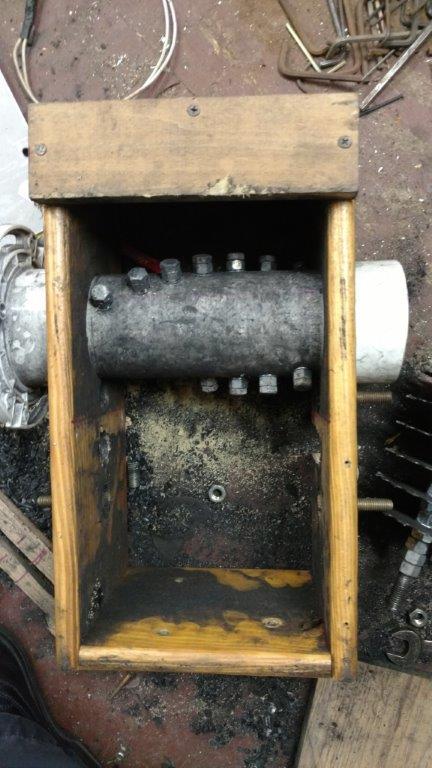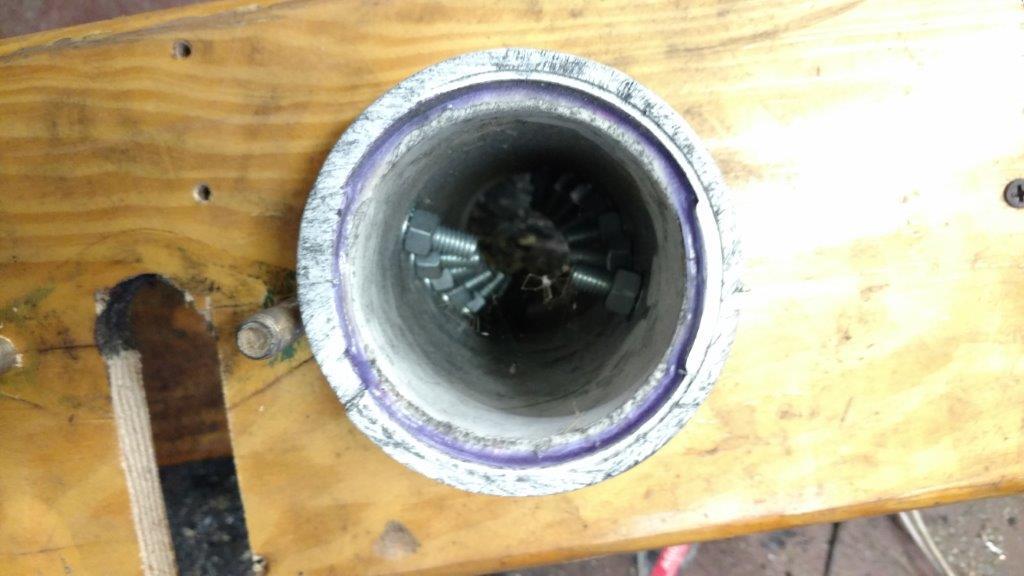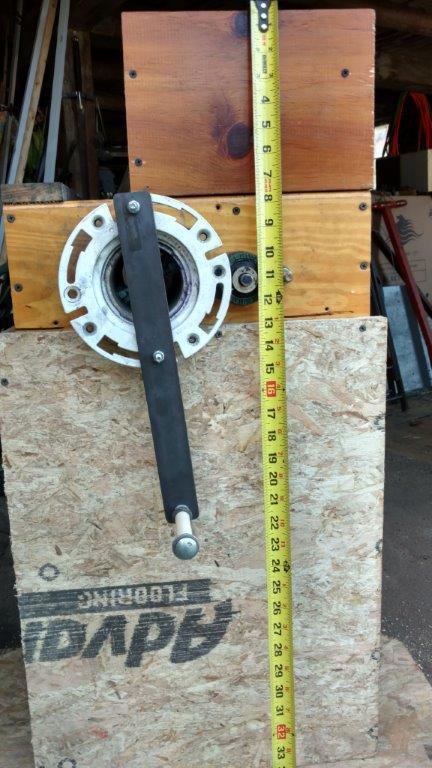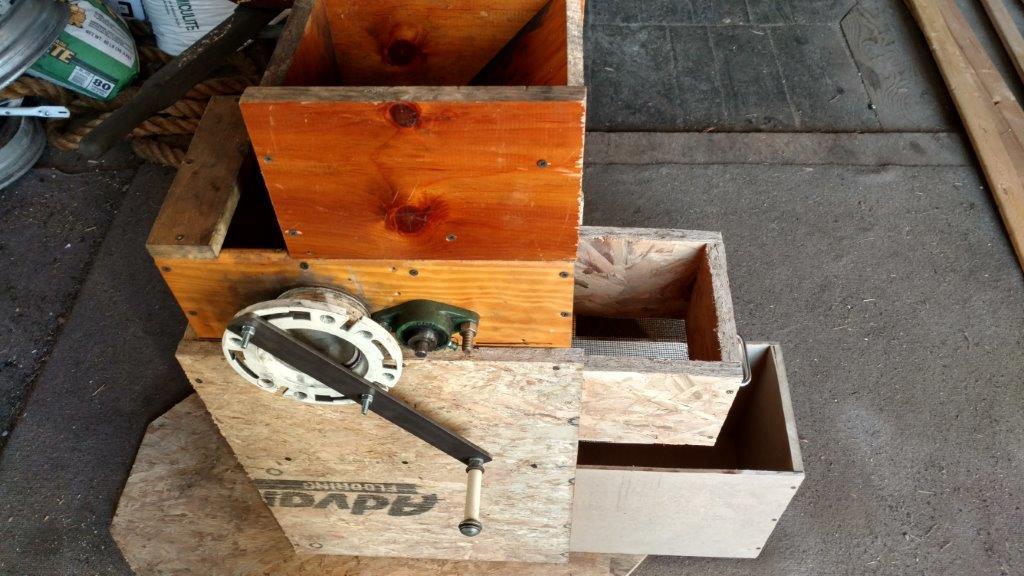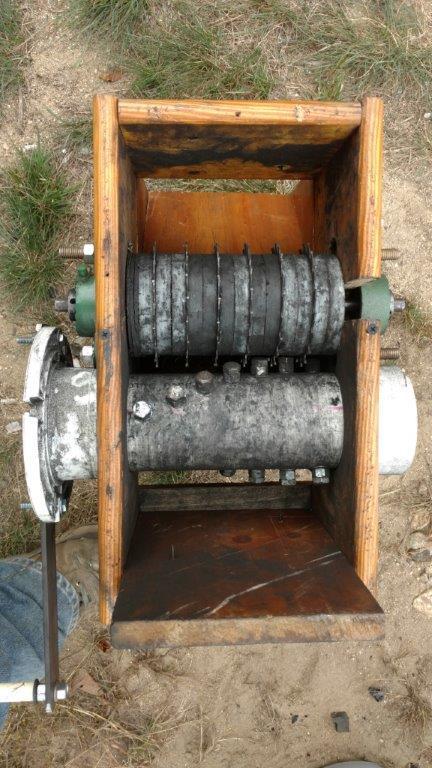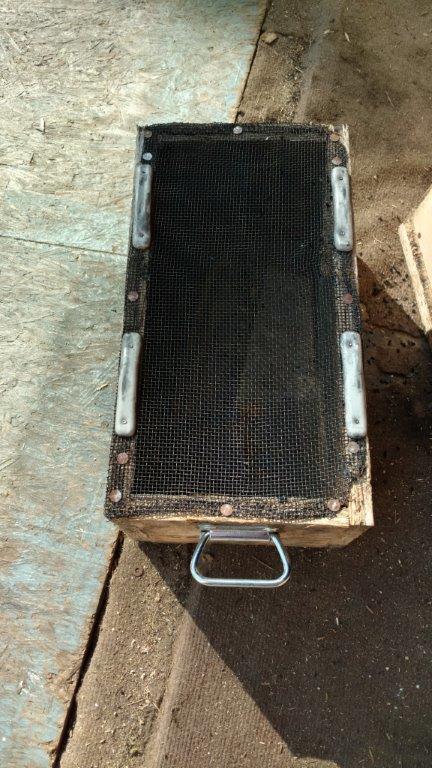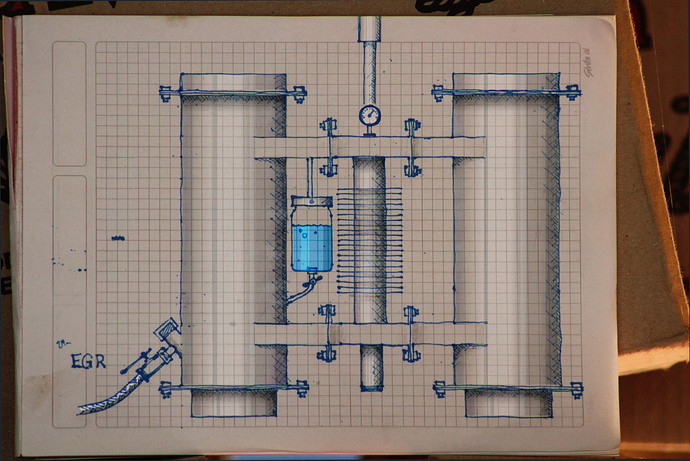Thanks Kristijan.
Besides my “ab-roller” grinder, I have made three other hand-powered grinders for charcoal. The first had teeth (5/8" X 3/4" studs) on a cylinder that rotated between spinning saw blades.The second used interlaced and counter-rotating saw blades and the other has stationary metal fingers between rotating saw blades. These designs work, but require a lot of back and forth motion to keep things moving through.
Your experience is sending me back to take another look at a hand-cranked grinder. I assumed that the big teeth and fingers on the GG style would be too hard to hand crank.
Kristijan & Bruce,
Any chance you could share pictures of your grinders? If they are fast simple and effective, as Kristijan says, I would like to see what they look like, if that is ok with you… Even if they are copies of another design—such as Gary’s—I’d love to see them. Thanks!
Trigaux, that’s an interesting nozzle… It might not work for the OpenFire because I plan on preheating the air before it hits the air nozzle with braided stainless tubing. I’ll be wrapping the core tube with it in some fashion… Thanks for posting it.
Troy,
I spent last half a hour looking for that picture of the grinder but cant find it anywhere. Imagine a 3" pipe with 8x8x10mm pins welded in rows, the number of pins, and the number of rows (lengh of 3" pipe) determins hand torq required. The stationary anvil dimensions determin charcoal size. Very similar to Garrys grinder. The only difference it has more teeth and its hand cranked.
Ps the positive effect of a hand cranked grinder is you feel what kind of char you are dealing with. Any unchared wood that wuld be crushed in a motorised grinder, you feel on the hand an can eliminate.
My copy of Gary Gilmore’s grinder is not hard to hand crank. I wear a dust mask, and crank it with the right arm. The hopper holds a plastic bucket of raw charcoal. I grind a couple of buckets, then put it on my 1/8" hardware cloth screen and sift it through with a brush.
http://imgur.com/EaMCZcE
http://imgur.com/DX56lmV
The grinder teeth are made from old railroad spikes. They are welded onto a three inch iron pipe, and that pipe is tack welded to the bicycle crank. Quick and inexpensive to make.
I inspect my raw charcoal before and after it goes into the grinder, mostly looking for nails, bolts, and any small brands.
I love the bicycle mount idea!
Here is a picture of my default charcoal processor:
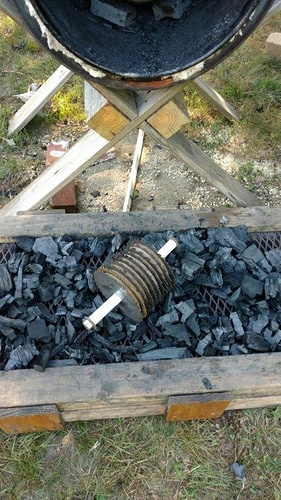
“Ab roller” made of saw blades with wood spacers on 5/8" bolt with PVC handles. I’m thinking about trying a long handle on this so I can stand up rather than leaning over. 3/4" expanded steel on a 2" X 3" frame over another frame with 1/4" screen. After crunching charcoal through the 3/4, the top frame is lifted off and the 1/4" screen is shaken longwise on glder strips, leaving the frame full of engine ready fuel. Garden biochar falls through to the box below. This is my quickest down and dirty system.
I’ll try to get pictures of the other grinders for you later.
Hand-Cranked Fan Update
Been doing some research into hand-cranked fans, and I’m pretty sure I have the answers I was seeking… Like everything else in physics, there are gives and takes. The backward curved blades and the radial blades are similar in performance, with an advantage going to the radial blades. It turns out these are also the easiest to manufacture.
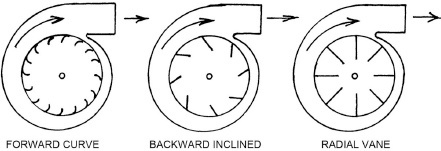
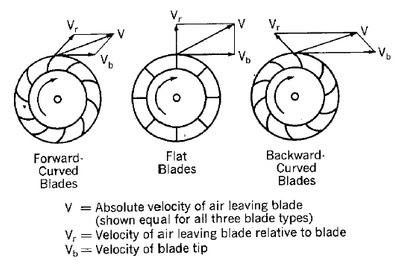
Excerpt from Gingery’s book:
“The forward curved vane type is the familiar quiet “squirrel cage fan” found in low pressure applications. It is made up of many vanes of small area that are curved in the direction of rotation. The wheel will often be about as wide as its diameter, and the inlet opening will often be nearly as large as the wheel diameter. Although it can generate pressures up to 1-1/2” water column, it is most often operated below 1" water column.
Compared to squirrel cage fans, backward inclined vane fans have fewer vanes of greater area that are inclined away from the direction of rotation. This produces a non-overloading characteristic which makes it ideal for commercial heating, air conditioning and ventilating applications where load conditions in complex duct systems vary greatly with time. These fans must run at higher speeds to do the same work as the forward curved types resulting in noisier operation. Although capable of higher pressures, backward inclined vane fans are not usually operated above 3" water column of pressure.
The radial vane type is characterized by straight vanes of greater depth with the wheel usually being narrow in proportion to its diameter. It is capable of pressures well above 12" water column and very high velocity. Radial vane fans are usually of much heavier and stronger construction than ordinary ventilating fans, and are much noisier. This type is most often needed in shop applications. This is the basic design type discussed in this manual since it is ideal for exhausting, for conveying dust and dirt, and for forced draft applications.
The number of blades, or vanes, in a wheel has an effect on performance and efficiency. Low pressure, high volume fans will have many blades while a high pressure radial vane fan will have fewer. In general, increasing the number of blades will reduce slippage and thus increase efficiency until a point is reached where losses due to friction and reduced inlet area will offset gains. A commercially built radial vane fan might have from 5 to 12 blades while a backward inclined wheel might have from 10 to 20 blades. A curved vane squirrel cage fan might have from 30 to 60 or more vanes. Since multiples of four are easy to layout with available home shop methods, I have found that 8 blades works well for most high pressure fans, while 16 blades do nicely for higher volume needs when pressure is not the main requirement."
Seems like a pedel bike would better than a hand crank fan, just hook fan in place of back tire.Nice info on the fan types and there diferences,though i caint read as fast as you can write.
Kristijan,
Your “Go with simple, it always works best.” comment about your hand cranked charcoal grinder inspired me to not give up on this option. Here are some pics of the result:
The last pic. shows the mechanism from the underside. It works great. Fastest system yet. Originally I locked these blades together on a motor driven shaft. The saw blades now spin freely and independent of each other. So the bearings are no longer necessary. This hand cranked version is faster than the original motorized version. Thanks.
Interasting concept! Any chance we culd se a video of it working?
OK, here are a couple of short videos:
https://www.youtube.com/attribution_link?a=r8b0miI2Cpg&u=/watch%3Fv%3DsZxMM4yxwd8%26feature%3Dem-upload_owner
https://www.youtube.com/attribution_link?a=qYA1ZP-NCm8&u=/watch%3Fv%3DaUPt2IbBEVc%26feature%3Dem-upload_owner
This pic shows the glides on the bottom of the screen box:
Wow fast it is!
Looks like your char is a bit bigger thain mine. This is your engine grade right?
Yes, the chunks are a little bigger than the pieces that pass through 3/4" diamond screen on my other grinder. The half-round weights in the MGB reactor prevent this slightly larger fuel from bridging. If I were to make another grinder like this one, I might put the blades a little closer together and use smaller bolts on the spinning PVC pipe. This style grinder passes nails without binding which is important for my pallet wood charcoal.
Been super busy, but I’ve been making progress… This is an early concept sketch. I’m already in AutoCAD and the details are quite different, but the overall aesthetic is about the same… I’ll release the CAD drawings with all the internals once we wrap up… I just had this sketch laying around and thought it would be cool to post it.
Lots and lots and lots of work huh? Never ends, CAD model, then detail working drawings, then DXF, then CAM files and then sort through create BOM’s and dont even get me started on manufacture process haha.
Yeah been slaving away here on the new Ute Series I pellet fuel machine. Just about complete with the full product line for 2017 (8) machines in all and four are the Evolution Turnkey systems. This was a mountain of work. This is just the CAD now I have a few more mountains to chip away at yet; next gen electronics / programing and then update manufacturing processes. Its ever changing. 
Oh yeah once I get all that done, it start all over with next level development Argh!!
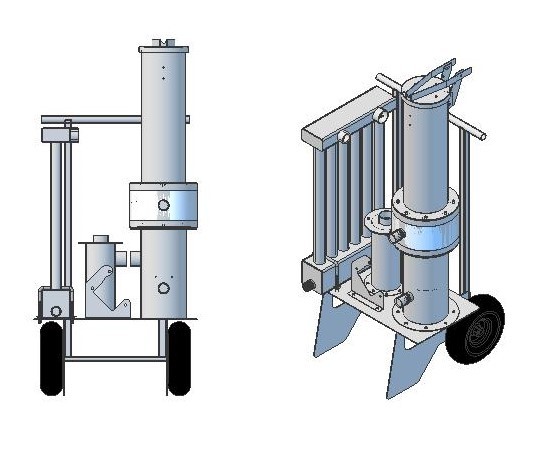
So, after another long hiatus, I dragged myself back into the mix… The last few months have been mentally designing the next gasifier. I think I have a design that will serve in 2 modes: 1) TLUD stove, and 2) gasifier for engine or cooking…
I am going to hijack the name OpenFire, and use it for this new TLUD/gasifier unit… Will follow up with more, soon…
We have missed you. Can’t wait to see what you’ve come up with.
Welcome back into the DOW loop Troy. Looking forward to what you are designing.
Bob

